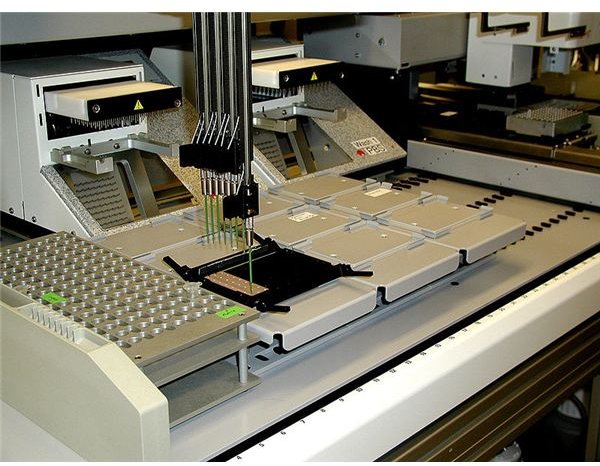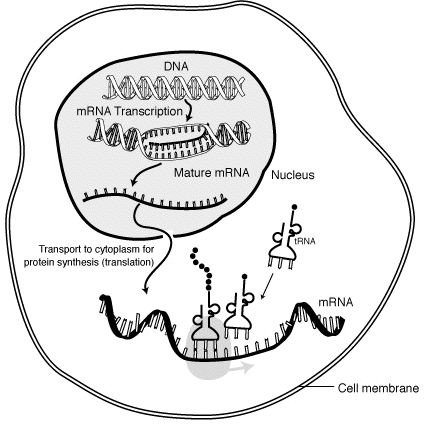Nutrigenomics and the Study of Food Nutrition: How Genetics Can Lead to An Improved Diet
Origins of Nutrigenomics and Nutrition Facts
Traditionally, nutritional studies were based on the science of identifying various vitamins and minerals needed by the human body to function correctly. Scientists in the 20th century discovered how these could be optimized to prevent deficiency diseases such as rickets, scurvy and goiters. And a number of fortified foods were created such as calcium-infused orange juice.
The challenge for nutritional science by the end of the century was to counter a series of new health concerns in industrialized countries: over-nutrition, obesity and type two diabetes. In response, a deeper understanding of the role that nutrition plays in health was needed. With the fruits of the Human Genome Project being realized scientists are exploring how diet affects the body at the genetic level. This will allow researchers to create the most beneficial diet for an individual, based on his or her own genetic makeup.
Basics of Nutrigenomics

Nutrigenomics applies a variety of different scientific methodologies to relate food nutrition and health on a genetic scale. The discipline utilizes a concept known as high-throughput application. High-throughput screening allows researchers to examine the effects of nutrients on human genes. In this way, the study of genomics has been linked to food nutrition, helping scientists determine the true nutritional value of foods on the human body at the molecular level.
Additional Techniques Used in Nutrigenomics

Additional research into nutrigenomics is conducted using a variety of other techniques including transcriptomics, proteomics and metabolomics. Transcriptomics allows nutrigenomicists to analyze the messenger RNA molecules produced in cells in relation to nutrients. Proteomics studies the structure and function of proteins, essential to the understanding of amino acids in cells. Metabolomics allows scientists to study cellular processes and the chemical fingerprints created. Using all of these techniques, researchers can find what level nutrients play in the overall function of genes.
Genetic Disorder Research

A number of researchers have found that genetic disorders are responsible for many of the health concerns faced by modern society. Variables within the human genome react to different levels of nutrients. One of the most important discoveries in nutrigenomics is the understanding of the hormone Leptin’s relation to obesity. Located on chromosome seven, Leptin regulates energy intake and energy expenditure. It reacts to high amounts of fructose consumption, and stops working. The body becomes Leptin resistant which leads to weight gain. Therefore, a potential way of tackling obesity is to modify the intake of foods with high fructose levels.
The Future of Nutrigenomics

As the understanding of the interaction between nutrients and genes becomes more apparent, scientists hope that research will be able to provide better explanations of the metabolic pathways involved. This could help prevent dietary-based diseases, most notably obesity and type two diabetes. The majority of near future research will be based on establishing a map of the necessary markers of early phase diseases. During the onset of diseases, the early period is usually the best time for successful intervention. And disease prevention could be achieved by tailoring diet to each individual based on their genotype so as to get the highest possible nutritional value from the right combinations of foods.
Additional Resources
Image Sources
Protein pattern analyzer. (Supplied by the U.S. Department of Health and Human Services; Public Domain; https://upload.wikimedia.org/wikipedia/commons/5/5b/Protein_pattern_analyzer.jpg)
MRNA interaction. (Supplied by the National Institutes of Health; Public Domain; https://upload.wikimedia.org/wikipedia/commons/f/fb/MRNA-interaction.png)
Fruits andvegetables. (Supplied by Dungodung at Wikimedia Commons; Public Domain; https://upload.wikimedia.org/wikipedia/commons/b/be/La_Boqueria.JPG)
Fat mouse. (Supplied by the U.S. Federal Government; Public Domain; https://upload.wikimedia.org/wikipedia/commons/0/0b/Fatmouse.jpg)
Nutrition label. (Supplied by the U.S. Federal Government; Public Domain; https://upload.wikimedia.org/wikipedia/en/1/1e/Nutrition_label.gif)
